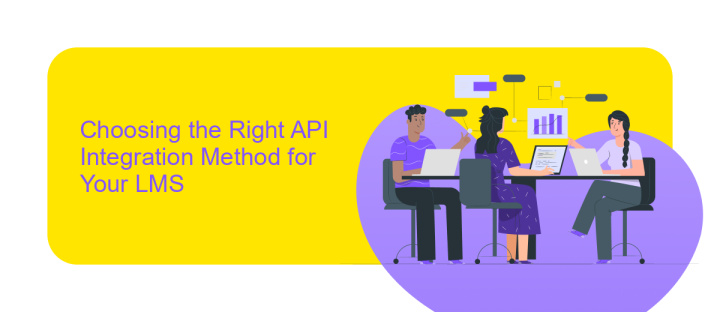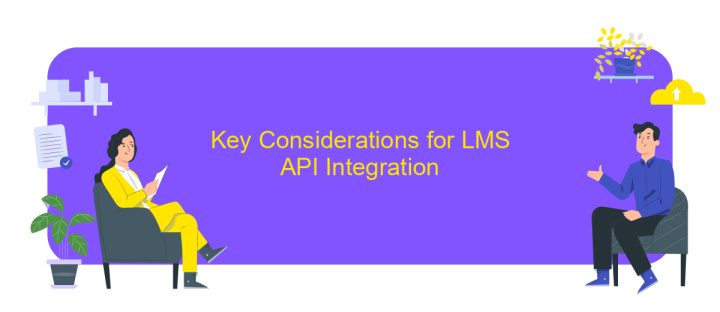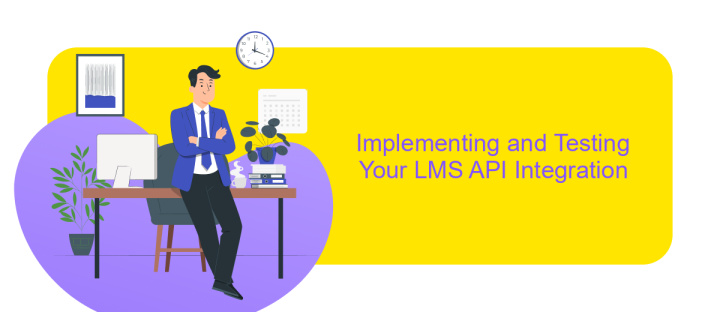API Integration for LMS
In today's rapidly evolving educational landscape, the integration of Application Programming Interfaces (APIs) with Learning Management Systems (LMS) has become crucial for enhancing functionality and user experience. API integration enables seamless communication between different software applications, allowing educators and administrators to streamline processes, personalize learning experiences, and access a wealth of data. This article explores the benefits and strategies of effective API integration for modern LMS platforms.
Understanding LMS and API Integration Basics
Learning Management Systems (LMS) are platforms designed to facilitate the administration, documentation, tracking, and delivery of educational courses or training programs. They are essential tools in modern education, allowing educators to create, manage, and deliver content efficiently. Understanding the fundamentals of LMS is crucial for enhancing the learning experience, as it enables seamless content distribution and user interaction.
- Centralized learning resources
- Automated administration
- Progress tracking and reporting
- Scalability and flexibility
- Enhanced communication tools
API (Application Programming Interface) integration plays a vital role in connecting LMS with other software applications, enabling the exchange of data and functionalities. Through APIs, LMS can be extended with additional features, such as integrating third-party educational tools or synchronizing data with other systems. Understanding API integration basics is essential for leveraging the full potential of an LMS, ensuring that it meets the evolving needs of educational institutions and learners. By effectively utilizing APIs, organizations can enhance their LMS capabilities, providing a more dynamic and interactive learning environment.
Choosing the Right API Integration Method for Your LMS

When selecting the right API integration method for your Learning Management System (LMS), it’s crucial to consider the specific needs and technical capabilities of your platform. Start by evaluating the types of data you need to exchange and the frequency of these exchanges. RESTful APIs are a popular choice due to their simplicity and compatibility with various programming languages, making them ideal for most LMS integrations. Alternatively, if your LMS requires real-time data synchronization, consider using Webhooks, which can provide immediate updates and enhance the responsiveness of your system.
Another important factor is the ease of implementation and maintenance. Tools like ApiX-Drive can streamline the integration process by offering pre-built connectors and a user-friendly interface, reducing the need for extensive coding skills. This can significantly cut down the time and resources required for setup and ongoing management. Additionally, ensure that the chosen method supports scalability and security to accommodate future growth and protect sensitive educational data. By carefully assessing these elements, you can choose an API integration method that enhances your LMS's functionality and user experience.
Key Considerations for LMS API Integration

When integrating APIs with a Learning Management System (LMS), it's crucial to consider several factors to ensure seamless functionality and enhanced user experience. Proper planning and understanding of these considerations can prevent potential issues and optimize the integration process.
- Compatibility: Ensure that the API is compatible with your LMS and supports the required data formats and protocols.
- Security: Prioritize secure authentication methods and data encryption to protect sensitive information.
- Scalability: Choose an API that can handle the growth of users and data without compromising performance.
- Documentation: Comprehensive and clear documentation is essential for efficient implementation and troubleshooting.
- Support: Opt for APIs with reliable customer support to assist with any technical issues that may arise.
By carefully evaluating these key considerations, organizations can effectively integrate APIs into their LMS, resulting in improved functionality, enhanced learning experiences, and streamlined operations. Taking the time to address these factors can lead to a more successful and sustainable integration, benefiting both administrators and learners.
Implementing and Testing Your LMS API Integration

To successfully implement your LMS API integration, start by thoroughly understanding the API documentation provided by your LMS vendor. This documentation will outline the necessary endpoints, authentication methods, and data formats required for seamless integration. Ensure that your development team is familiar with these specifications to avoid common pitfalls during implementation.
Next, establish a clear plan for integrating the API with your existing systems. This involves mapping out the data flow between the LMS and other software applications, identifying key functionalities you wish to enable, and setting up a timeline for development and testing. Collaboration with stakeholders is crucial at this stage to align expectations and requirements.
- Review the API documentation thoroughly.
- Plan the integration process meticulously.
- Develop and test in a controlled environment.
- Monitor and optimize the integration continuously.
Once the integration is developed, rigorous testing is essential to ensure it functions as expected. Conduct both unit and integration testing to identify and resolve any issues. After successful testing, deploy the integration in a live environment, while continuously monitoring its performance to make necessary adjustments. This ensures the integration is robust, efficient, and meets the needs of your users.


Maintaining and Optimizing Your LMS API Integration
To ensure the seamless operation of your LMS API integration, regular maintenance is essential. Start by monitoring API performance and usage metrics to identify any bottlenecks or inefficiencies. Regularly update your API documentation and review any changes in the LMS or third-party systems that could impact integration. Implementing automated testing can help detect issues early, ensuring minimal disruption to users. Additionally, consider using services like ApiX-Drive, which can facilitate the management and synchronization of data across multiple platforms, making maintenance more efficient.
Optimization is another crucial aspect of maintaining your LMS API integration. Evaluate the data flow and identify opportunities to streamline processes, reducing latency and improving response times. Optimize API calls by batching requests or using webhooks to minimize unnecessary data transfer. Regularly assess and adjust API configurations to align with evolving business needs and technological advancements. Leveraging tools like ApiX-Drive can enhance optimization efforts by providing insights and automation capabilities, ultimately improving the overall performance and reliability of your LMS integration.
FAQ
What is API integration in the context of an LMS?
How can API integration benefit my LMS?
What are the common challenges associated with API integration for an LMS?
How can I automate API integration processes for my LMS?
What should I consider when choosing an API integration solution for my LMS?
Time is the most valuable resource in today's business realities. By eliminating the routine from work processes, you will get more opportunities to implement the most daring plans and ideas. Choose – you can continue to waste time, money and nerves on inefficient solutions, or you can use ApiX-Drive, automating work processes and achieving results with minimal investment of money, effort and human resources.

